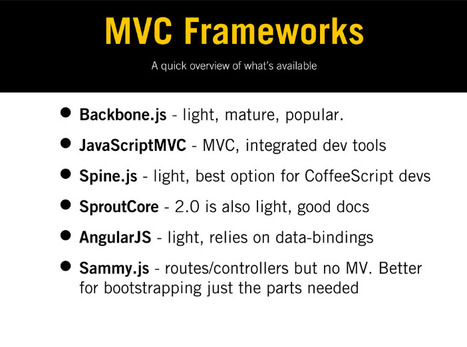JavaScript events are very powerful, they give you the power to capture real world events in real time. For example, when a user moves their mouse in the browser or when they click.
Using JavaScript events to interact with DOM objects defined Web 2.0 and is still widely used (thanks to jQuery and similar libraries) but it has its limitations, the events are predefined and tied to the browser BOM and DOM.
A more powerful implementation of JavaScript Events is in Event Emitters. Most of the popular JavaScript libraries/frameworks have their own implementation of Event Emitters.
My framework of choice is backbone.js and it uses Backbone.Events to implement Event Emitters.




 Your new post is loading...
Your new post is loading...









